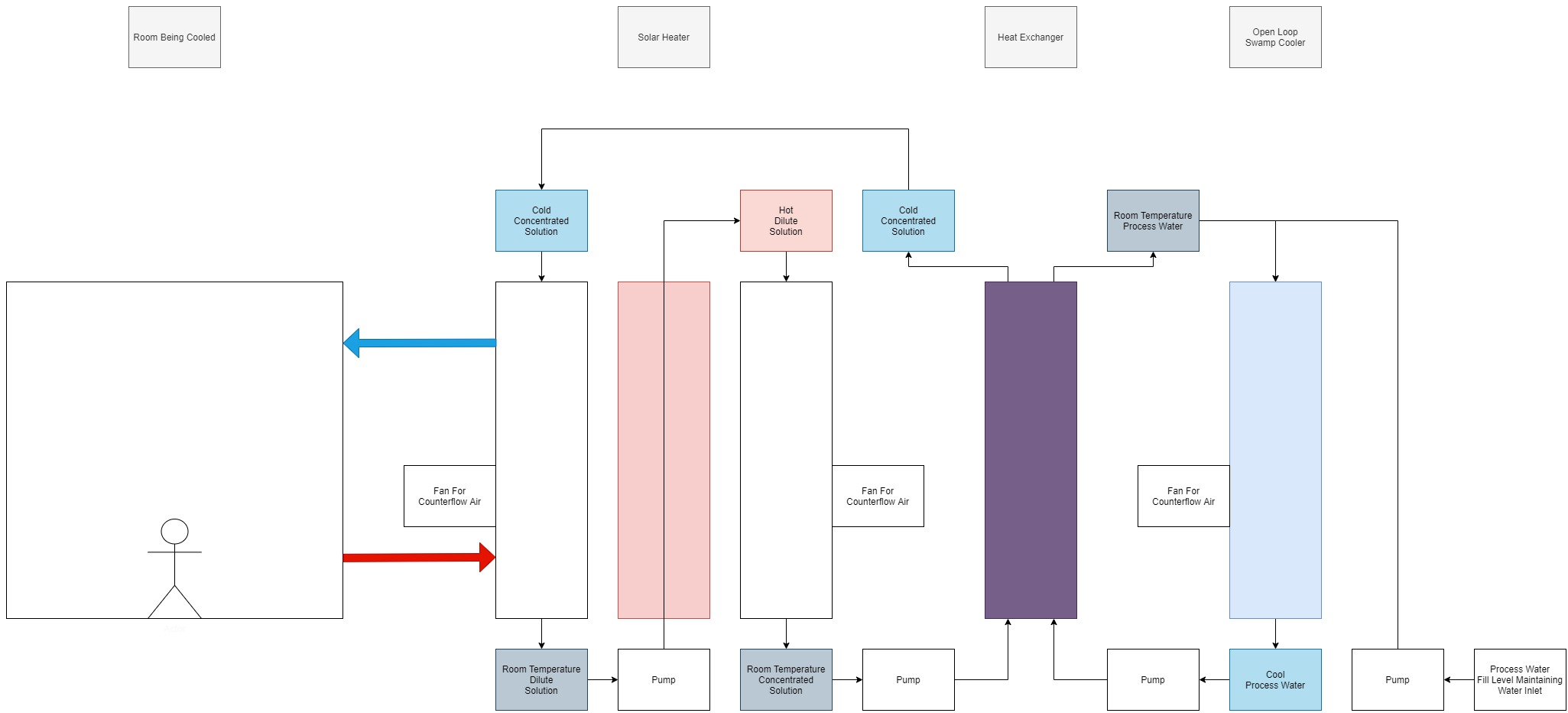Desiccant-Humidifier Cycle Refrigeration
Jump to navigation
Jump to search
Basics
- A type of Refrigeration Cycle that uses a combination of evaporative cooling (endothermic cool end), and dehumidification via dessicant(s) (exothermic hot end) to pump heat
- Can be used for Solar Air Conditioning
- Is also advantagous in it's design, and material simplicity
Plotting
- Should the columns be randomly packed, packed, spray, or some hybrid
- Little info on water evaporation (That User:Eric has found so far )
- A Whitepaper on CO2 Scrubber Tower Design (this was for co2 scrubbing via amonia absorbtion but compared the Spray Towers and Packed Columns)
Process
Evaporative Cooling Collumn
- Room Temperature air is pushed in to a counter flow water sprayer collumn with mesh/bioballs
- The water evaporates and cools the air (at the cost of increased humidity)
- It is then sent to the Dessication Collumn
Dessication Collumn
- This works in a similar manner as the Evaporative Column, but it has the opposite goal, Dessication of the Air Stream
- It does this via a dessicant, most likely a Liquid Dessicant, due to ease of operation
- Produces Fully Dry Air, and Saturated Dessicant via Liquid Dessicant
- Make an identical unit to the Evaporative Cooling Collumn, and replace the water with ?percent concentrated calcium chloride solution
- Air sent to Humidity Control Collumn (Optional), Liquid Dessicant sent to Regenerator
Humidity Control Collumn
- This takes the Fully Dry Air, and brings the humidity up to comfortable levels
- It can use OTS humidifiers, or be a smaller version of the Evaporative Cooling Collumn
- This stage is OPTIONAL
Dessicant Regeneration Module
- This is a module where the Saturated Liquid Dessicant is Heated to Concentrate it and thus regenenerate it.
- Passive solar is promising, but any heat source will do
- Also heat exchangers that utilize waste heat from the process for regeneration may improve efficiency further
Industry Standards
Open Source Designs
OSE Design
- Open Source Dessicant-Humidifier Cycle Based Liquid Chiller (Used with a Hydronic Cooling system, or just a spray tower for the air?)
